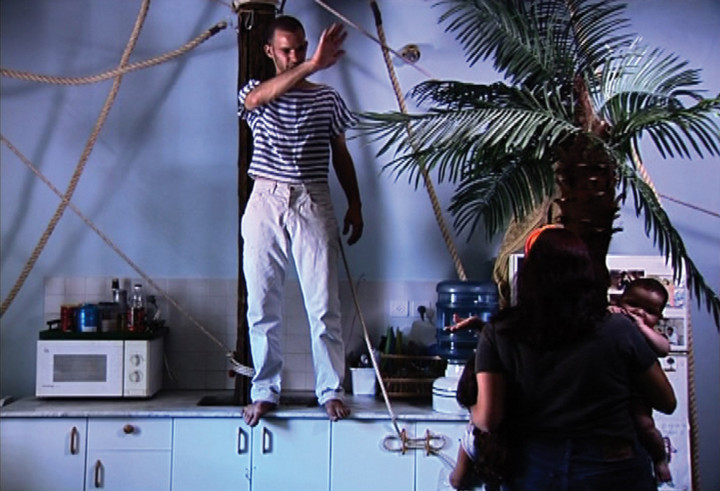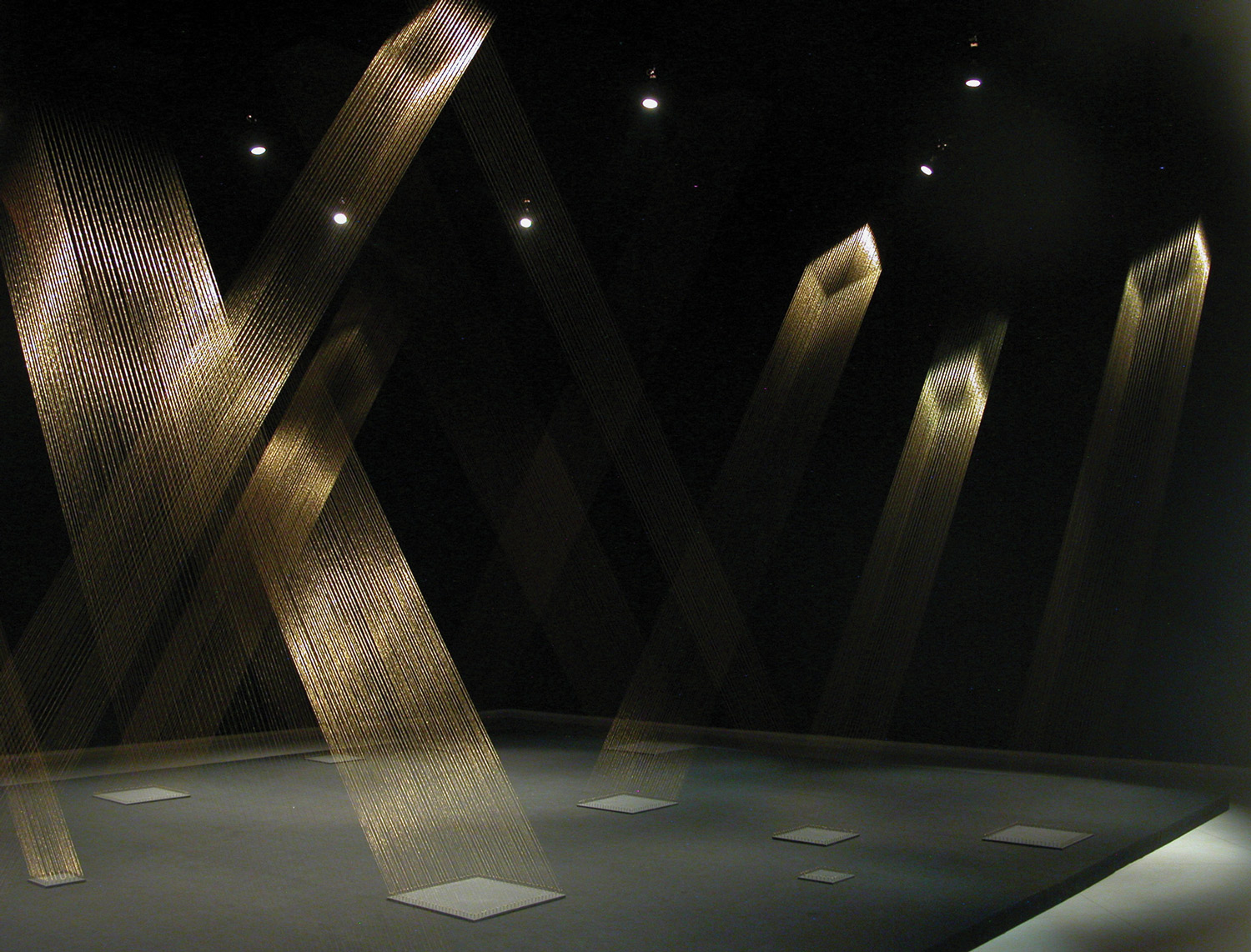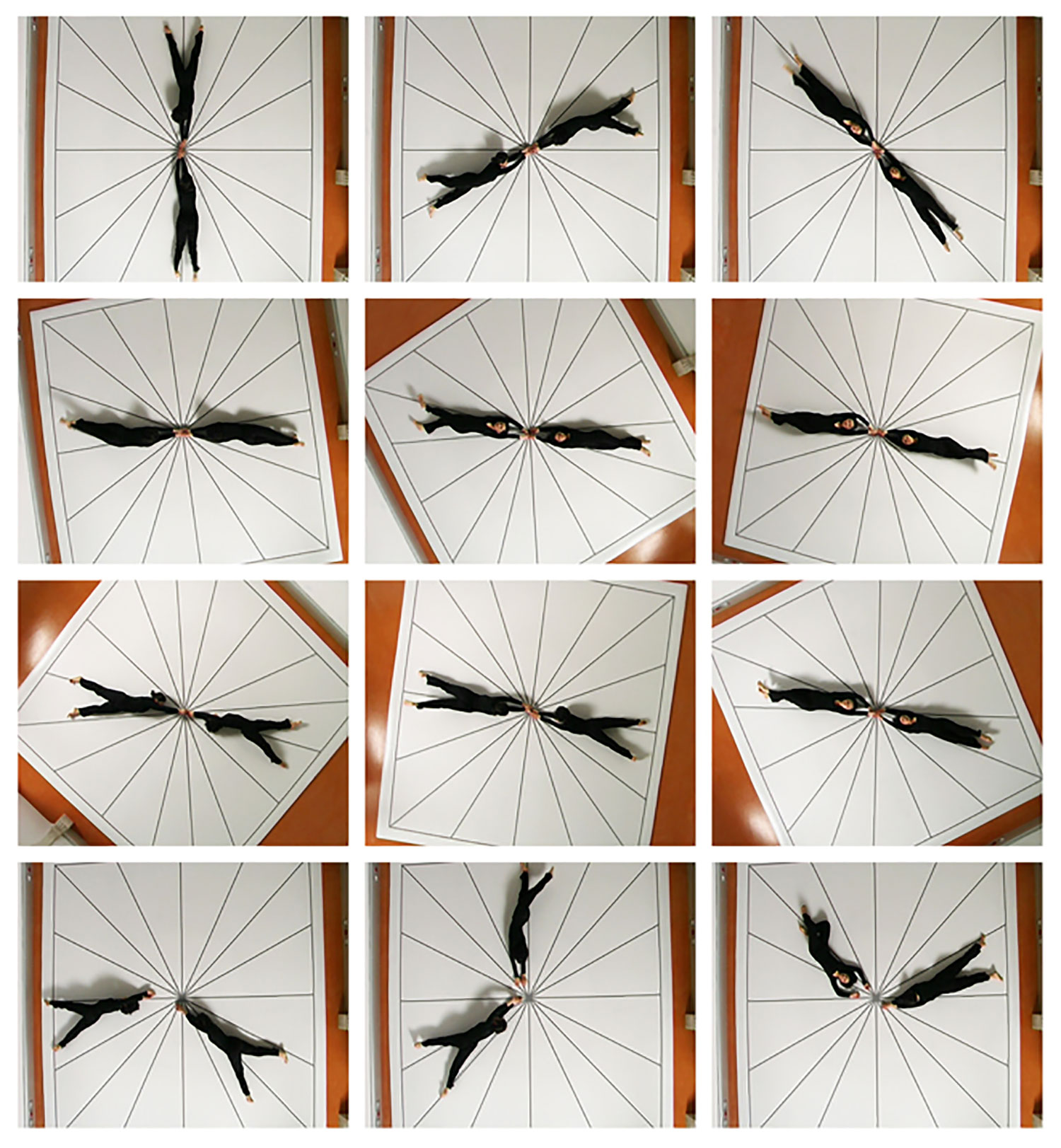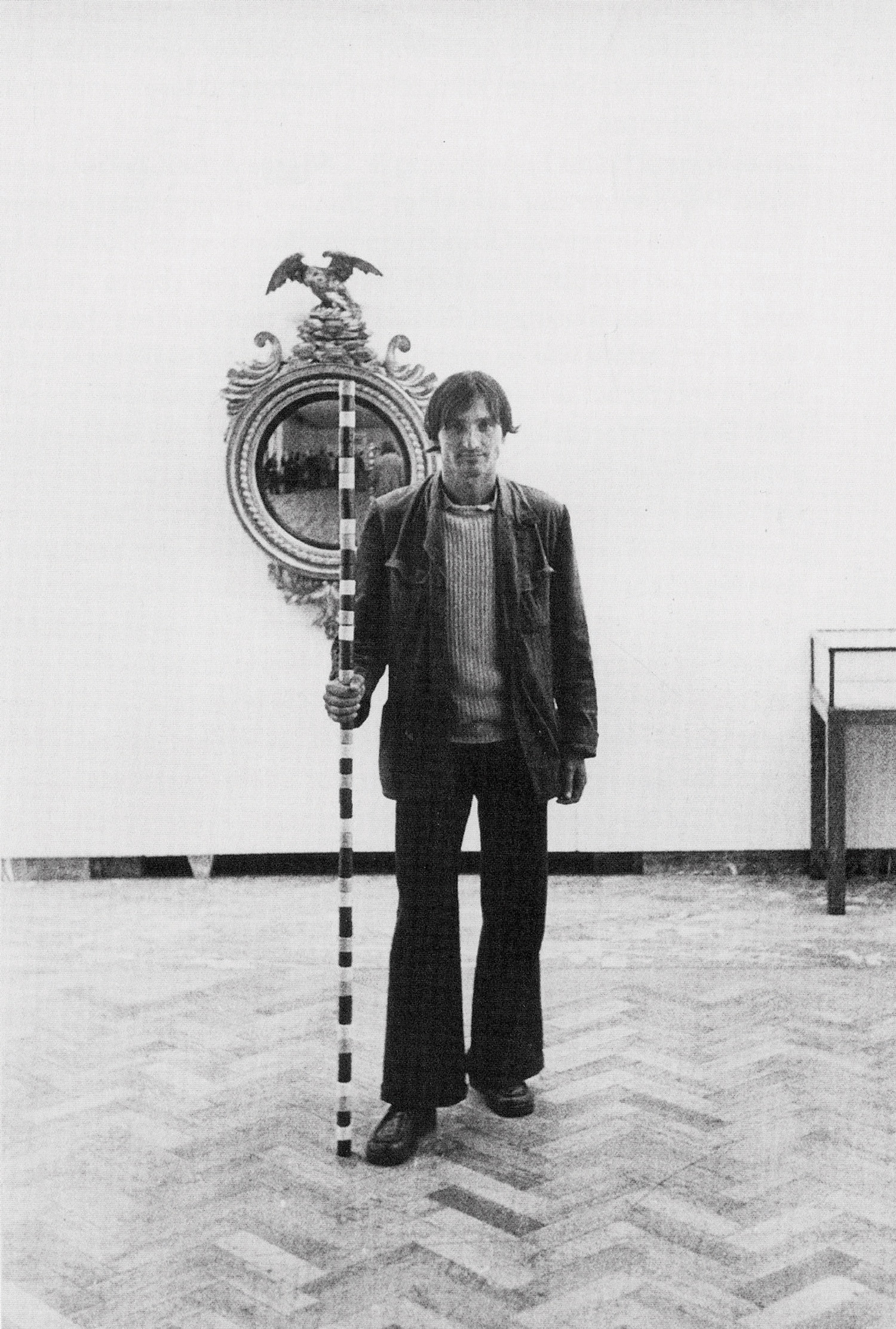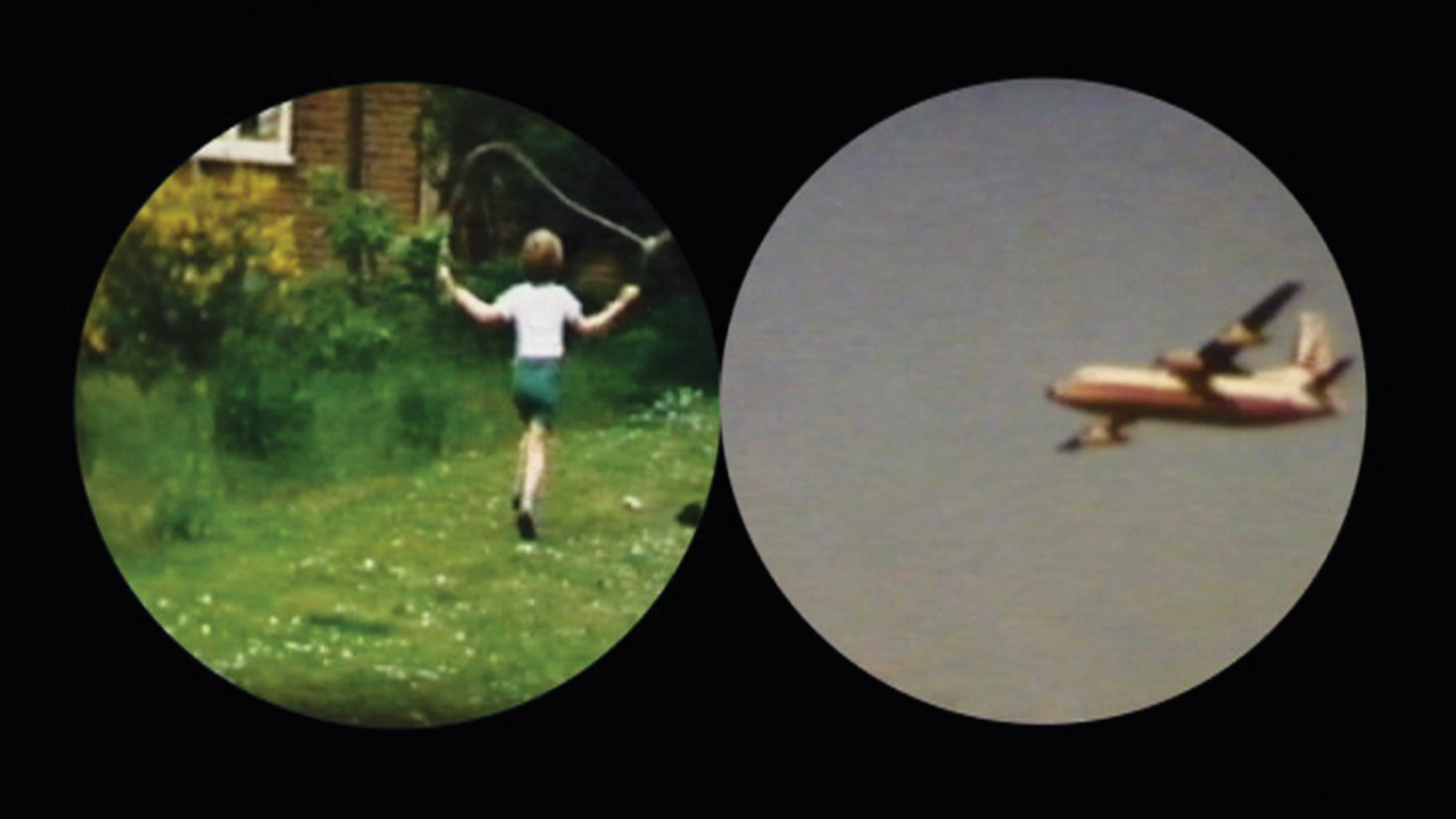
Maurizio Cattelan: I will start with a quote: in a review of your show a year ago in Artforum you have been described as someone who creates “Pixar-style art products, family-friendly viewing for a broader demographic than that addressed by most art videos.” Can you relate to this?
Guy Ben-Ner: It’s hard to know whether that is a compliment or not. Most likely not. In any case it’s a conscious decision.
MC: What do you mean by a conscious decision?
GBN: I made my choice quite a long time ago, when I started to work with my children. The only proper way to pay them back for their labor was to allow them to enjoy the end product. So I try to make movies that both you and my children could understand, even if on different levels. In any case I felt there is no reason not to extend that approach further — I would like to communicate with people, in general, and not only with the closed cycle of art people. I’d be more ashamed of being accused as an artist for artists than a populist. It’s more of a responsibility. But then you would also have to be arrogant enough to believe you have something of value to say.
MC: And are you arrogant enough?
GBN: I guess so. The last video I made, Second Nature (2008), was considering that question exactly: can you tell a fable today? Is it not too arrogant to believe you can educate someone? On the other hand, if I believed art could not deliver any kind of lesson or critique of the world, I would stop making it.
MC: In that video we first see two animal trainers train a fox and a crow to enact the famous fable by Aesop, The Fox and the Crow. You explained why you choose fables, but why this particular fable?
GBN: Firstly, because it’s an iconic one. So it becomes about fables in general. Secondly, because I understood that specific fable as a story of training, in which one animal trains another. So I chose trainers that work with animals for the film industry in order to pitch that against the fable: they are training for training, in a way. As such it becomes like a play you cannot rehearse for: once Gwen, the crow trainer, tries to get Oreo, the crow, to give up his cheese, she might think she trains him. However, she actually performs the fable itself, because she is already occupying the position of the fox. It’s like a documentary that becomes fictitious all at once. Because fables are about a lesson for life, and I want to eliminate the separation between this lesson and the life experienced.
MC: So, are the animals film professionals? Did they appear in any well-known film before?
GBN: Yes. My crow was doing especially well career-wise — he appeared in Harry Potter 4 and in The Matrix. But I do not like the phenomenon of celebrities in artist’s videos, so I keep it hushed.
MC: The trainers are performing Samuel Beckett when they are left alone. Why?
GBN: That is the moment I train the trainers — I ask them to act. I also thought Beckett is perfect for non-actors, since I love reading him and hate seeing him performed on film or stage.
MC: But why Beckett’s Godot?
GBN: Once the animals leave and the two trainers are left by the tree I couldn’t imagine anything but Godot there. The stage requirement for both narratives demands two figures around a lonely tree. It’s an elegant economical decision — to have one and the same set for two different narratives. I also liked the near animosity of the Beckett figures in opposition to the speaking animals of the fables. It’s almost like the combination of a wild boy and a clever ostrich.
MC: Speaking of economical solutions, economy was also a key concept behind your previous video Stealing Beauty (2007).
GBN: Yes. That is an example of a movie that costs nothing.
MC: Of course cheap. You stole the sets, didn’t you?
GBN: You should talk. And I stole the music too. It’s from commercials running on screens at IKEA Berlin. I recorded it straight to the camera. The idea for the movie came because the showrooms looked more like family-sitcom sets than houses people actually live in. So I lifted the veil. But if in the classical family sitcom the economy is separated from the show, here the price tags, in view everywhere, make the two spheres collapse into a single one.

MC: So what about the relation between families and economics?
GBN: It was taking from Friedrich Engels the idea of the family as an institutional concept — one that is demanded by society at a certain historical moment to preserve private property. Both concepts were born at the same historical time because both necessitated each other, the family functioning as a piggy bank. So, that private sphere we cherish so much is actually an internalization of outside demands, just like the super ego is. And just as in the case of the super ego, we obey the demands more willingly since we are under the illusion that these demands are our own. Classic cinema trained us that way. It is claimed that Aesop was a slave. But if you read his fables you realize they teach you not to get too ambitious. The fable wants the frog to remain a frog. In fables one must not try to be what one was not intended to be. This made me think Aesop was not a slave but an invention of the masters to keep slaves from wanting more than they have. So he too is an external authority that is inserted within.
MC: When you speak of the family sitcom you speak of a certain genre. It seems you switch between different ones, nature documentaries, instructional videos, comedies. Why this interest with genres?
GBN: I do not see genres as an empty form ready for you to put your content into. Genres are already filled with content even before you touch them. Nature documentaries, for example, are there to teach us something about how ‘natural’ our cultural conceptions are. The family sitcom too has an educational agenda. So, to deal with this or that genre is already a way to deal with the form a film adopts in order to tell a very certain story. From this point of view the instructional video is the meta-genre. It instructs us without trying to hide it, like fables.
MC: Do you like movies at all?
GBN: You know how you get anesthesia at the dentist and the treatment is fine — no pain involved? But then, as you make your way back home, the effect starts to fade and you realize it is better not to smile at people because your smile comes off totally crooked? And your body, it feels like it had been deceived, as if something was done to it behind its back? I have loved cinema. I have no pain watching films. But many times I walk out afterwards with that crooked smile on my face, feeling lured.

